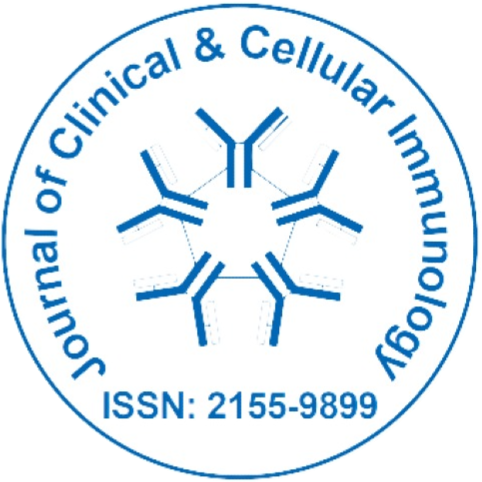
Journal of Clinical and Cellular Immunology
Open Access
ISSN: 2155-9899

ISSN: 2155-9899
Konstantin Chumakov, Diana Kouiavskaia, Olga Mirochnitchenko and Stephanie Troy
Food and Drug Administration, USA
Scientific Tracks Abstracts: J Clin Cell Immunol
Statement of the Problem: Two vaccines against poliomyelitis �?? Inactivated Polio Vaccines (IPV) and live Oral
Polio Vaccine (OPV) are among the most successful vaccines ever. They define paradigms for vaccine protection
against viral diseases, and brought about virtual elimination of the disease in most of the world. Nevertheless, some
questions about the correlates of their efficacy remain. Polio eradication will lead to discontinuation of OPV use and
its replacement with IPV. To ensure IPV supply for resource-limited countries a new generation of IPV based on
attenuated Sabin strains (sIPV) was developed. This raised important questions about determining its efficacy and
potency. How can these new vaccines be compared to the conventional IPV (cIPV) made from immunochemically
different strains? Can we use the same benchmarks for potency and protectiveness for both types of IPV? These
questions prompted us to undertake the study.
Methodology & Theoretical Orientation: We assembled a panel of wild and vaccine-derived polioviruses and
used it to determine titers neutralizing antibodies in sera from healthy previously immunized subjects, as well as
in immunized animals. In addition, we have used a transgenic mouse model to determine the minimal level of
antibodies needed for protection. Findings: antibodies against poliovirus present in sera of experimental animals
as well as healthy vaccinated subjects exhibited a significant strain bias when tested in neutralization reaction.
Maximum neutralization titers were observed when neutralization tests were performed against the strain used
for vaccine manufacture, while titers against heterologous strains tended to be lower. In some extreme cases the
difference in titers was more than 10-fold. As a result, while the level of seroprotection in a group of vaccine recipients
was sufficiently high when measured against the homologous strain, it was significantly lower when heterologous
strains were used. A booster dose of IPV increased all titers, and the seroprotection level was acceptable even when
measured against heterologous strains. We will also present experiments to identify the minimal protective level of
neutralizing antibodies by passively immunizing transgenic mice expressing the human poliovirus receptor.
Conclusion & Significance: The results demonstrate that strains of type 1 poliovirus have different ability to be
neutralized by vaccine-induced antibodies. This suggests that while people with minimal levels of neutralizing
antibodies can be protected against viruses that are immunologically similar to the strains used in vaccine manufacture,
they may have undetectable levels of neutralizing antibodies against other strains and thus not be fully protected.
Therefore to ensure protection against a wide range of viruses, clinical trials must include measuring seroconversion
using both homologous and heterologous strains. The same applies to performing pre-clinical evaluation and
measuring potency of IPV, as well as to performing seproprevalence studies. The results also suggest that to ensure
robust protection against all strains the level of neutralizing anti-poliovirus antibodies must be maintained at a level
higher than the commonly accepted minimum of 1:8.
Konstantin Chumakov works on creation of new methods for development and evaluation of vaccines against viral diseases. His main focus is on studying poliovirus and poliovirus vaccines. It includes application of cutting-edge molecular approaches for monitoring genetic stability and molecular consistency of viral vaccines, as well as on new immunochemical methods for characterization of vaccines and their potency and efficacy. The approaches include next-generation (deep) sequencing for assessing molecular consistency of viral vaccines as well as metagenomic surveillance, development of human monoclonal antibodies and their use for therapeutic and diagnostic purposes.
E-mail: konstantin.chumakov@fda.ffs.gov